| Umělec 2006/2 >> From Heidi Ho to the golden age of contemporary art in switzerland... and back? | Просмотр всех номеров | ||||||||||||
|
|||||||||||||
From Heidi Ho to the golden age of contemporary art in switzerland... and back?Umělec 2006/201.02.2006 Kunstfly | u-sobě | en cs |
|||||||||||||
|
Due to a lack of aristocrats, powerful cities and because of its strong iconoclastic protestant church, Switzerland has for hundreds of years been a very rural country and as regarding the fine arts, rather peripheral. In past and present - a small but beautiful place with a picture-postcard landscape of snow topped mountains, cheese, chocolate and Heidi, was an important inspiration to many local and traveling international artists. Unfortunately for the local artists there was not much to do here in past centuries, so most of them, for instance Johann Heinrich Füssli, Arnold Boecklin or Ferdinand Hodler and even architects like Le Corbusier and so many others would uproot at the first sign of success, finally making their careers abroad. Some had even left before to study at foreign academies, as Switzerland at that time did not offer proper art school education and was always known for its quality in the applied arts and good schools in this field.
Of course, there has always been a thin layer of industrial tycoons in Switzerland who collected art and since the second half of the 19th century supported Swiss artists as well, but of course the broad public didn’t take part in these exclusive circles. And the collectors with mostly bourgeois ideas of art usually were interested more in the eternal values than in young contemporary artist. After the Swiss author Paul Nizon had in the 1970s essay "Diskurs in der Enge" (Discourse in the Straits) analyzed the narrowed mindedness of Switzerland, everything suddenly changed for the better, patching the way forward for a new art scene of the 1980s. This mainly happened when collectors and also the big powerful internationalized Swiss companies and banks finally understood, that the arts could contribute to their image and started getting involved in the contemporary scene and systematically started to collect young art. And as the Swiss are tougher and solid in everything they do, they turned it now to the other extreme: The power of the Swiss currency was all of the sudden reflected into a new "Golden Age" of contemporary art. And luckily there appeared just at the right time a bunch of very good artists on the scene, who had an international potential, people like Fischli / Weiss, Urs Lüthi, Roman Signer, later on Pipilotti Rist and others. And the artists were well managed by a bunch of great curators like Harald Szeemann, Bice Curiger and some very professional gallery owners and museum curators. This was the beginning of an exciting artistic period which clearly put Switzerland on the cultural map as the European hot bed for contemporary art and artists: Swiss art became a demanded export article. Within the country Zurich became the home for art galleries such as Peter Kilchman, Eva Presenhuber, Bob van Orsouw, Hauser&Wirth and exciting spaces like the Migros Museum lead by Rein Wolfs or the Kunsthalle. And even beyond the big players, in Zurich a young and dynamic local art scene emerged with many "off-spaces," like Esther Eppstein’s Message Salon, later on Les Complices, White Space and K3 Project Space, as well as young galleries like for example StaubKohler, Ausstellungsraum 25, Galleria Laurin and Hubert Bächler. Though the city of Zurich spends less money on culture than Basel and about the same amount as Geneva, in the field of fine arts it is certainly the leading place in Switzerland. If contemporary Swiss artists travel abroad today, it is not only because they think more globally and want to learn about other art scenes, but also because the strong Swiss frank helps them to survive in those places with cheaper living costs. Berlin along side New York, Istanbul and Cairo seem to be in the top ten. It is common knowledge that Switzerland is expensive to live and sometimes still lacking in stimulating inspiring juices. But even if many of the Swiss artists do search for new inspiration abroad they carefully stick to their basis of existence in Switzerland by gladly picking up the yearly distribution of grants whilst maintaining their contacts to those important "art bods." The equilibrium between the strong and international art centers like Zurich, Basel (with its art fair), Geneva and the rest of the country with its smaller towns is less unbalanced than maybe some fifteen years ago. In many respects contemporary art institutions have in the past years spread from the main hub of Zurich to more local areas: The Kunsthaus Glarus has for many years been an ideal starting point, a happy spring-board for young, ambitious curators like Annette Schindler, Nadia Schneider and Beatrix Ruf. Ruf herself used the platform clearly to her advantage by becoming the controversial director of the highly acclaimed Kunsthalle Zurich. St. Gallens Neue Kunstalle was successfully re-launched by shooting star curator Gianni Jetzer – he currently seems to get the most articles about himself in the newspapers and is now just about to leave for new horizons to the Swiss Institute New York. Thun’s Kunstmuseum with Madeleine Schuppli attracts many visitors because of her exiting and international program, as well as the Kunsthalle Winterthur with its new curator Oliver Kielmayer. With his global curatorial thinking and enthusiasm for showing artists from abroad like Folker de Jong from the Netherlands, he may possibly shake the little town of 80,000 inhabitants into become the most sought after venue for young artists. The new look Kunsthalle Winterthur aims to offer a completely different cultural platform away from the highly acclaimed venues housed under the roof of the Löwenbrau, Zurich, on one hand an established force yet sometimes a stale monument to that which was achieved in Zurich during the1980s. While the Swiss federal government supports the arts with only about 0.3% of its budget, much depends of the local authorities. Still there is a very lively discussion going on regarding a planned new federal culture law. How much and what hould the money be spent on and what does the freedom of art mean, regarding criticizing the ones who pay for it? This development happened just one year after the big scandal about a state funded Thomas Hirschhorn show in Paris. The artist criticized (in one small detail) right wing national councillor Christoph Blocher at the Centre Suisse in Paris and immediately the old Swiss "nest soiling" reflex could be observed all over the country. A very unclever parliament decision followed a strong echo in the press: The means of the state run Pro Helvetia foundation, one of the main art supporters, were cut for 1 million Swiss francs per year. By the way, councillor Blocher is an important art collector himself but he is strongly specialized in collecting 19th century painter Albert Anker who idealized the simple Swiss life in the countryside. The very unfortunate behavior of many statesman in this affair and the ideas of some neo-liberal politicians to make the culture funding institutions more or less part of the Swiss tourism board, which promotes at the same time the tourist qualities of the alps and the famous Swiss cheese, seems rather disturbing. The open minded art scene fears a relapse to the old times of rural Switzerland and seems to activate its political consciousness: Recently in a performative action (Ein roter Teppich für die Kunst) the Swiss fine artists union Visarte handed over a petition against the shortage of funds for the fine arts to the parliament in Bern. Some months before this action, artists founded a shadow cultural ministry and elected a culture minister, a post that doesn’t exist yet in the political premiums of Switzerland!
01.02.2006
Рекомендуемые статьи
|
|||||||||||||
|
04.02.2020 10:17
Letošní 50. ročník Art Basel přilákal celkem 93 000 návštěvníků a sběratelů z 80 zemí světa. 290 prémiových galerií představilo umělecká díla od počátku 20. století až po současnost. Hlavní sektor přehlídky, tradičně v prvním patře výstavního prostoru, představil 232 předních galerií z celého světa nabízející umění nejvyšší kvality. Veletrh ukázal vzestupný trend prodeje prostřednictvím galerií jak soukromým sbírkám, tak i institucím. Kromě hlavního veletrhu stály za návštěvu i ty přidružené: Volta, Liste a Photo Basel, k tomu doprovodné programy a výstavy v místních institucích, které kvalitou daleko přesahují hranice města tj. Kunsthalle Basel, Kunstmuseum, Tinguely muzeum nebo Fondation Beyeler.
|























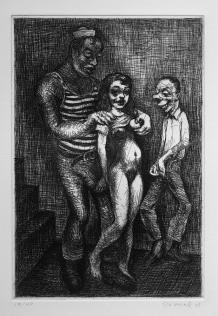




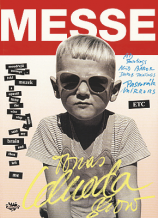
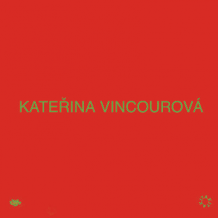
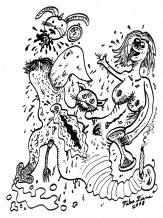
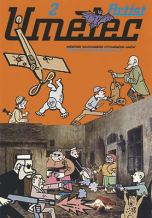


 New book by I.M.Jirous in English at our online bookshop.
New book by I.M.Jirous in English at our online bookshop.
Комментарии
Статья не была прокомментированаДобавить новый комментарий